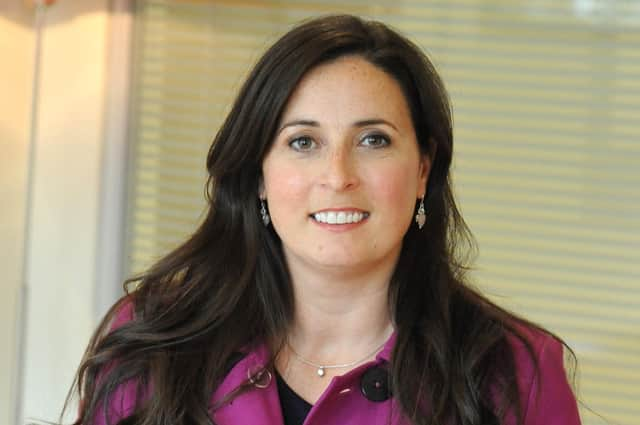Communications' challenges and opportunities amid coronavirus - comment


Earlier this year, we launched a webinar series with clients Homes for Scotland and Industrial Biotechnology Innovation Centre (IBioIC) on communicating effectively during Covid. As we anticipate another lockdown from Boxing Day, the communication insights shared at these events seem more relevant now than ever.
So what are the communications practices that will help your organisation survive and thrive? Our webinar panellists were clear that the starting point to any communications is usually your team. The working environment is likely to have an important influence here.
Advertisement
Hide AdAdvertisement
Hide AdSeveral studies show that we are unlikely to return to the previous norm of being in the office five days a week. Like it or not, lockdown has proved to many for the first time that it is possible to work remotely and, at times, more productively.
Since 2006, our Perceptive team members have always worked from home or remotely for at least part of the week, using the office as a hub for working collaboratively and, importantly, bonding together socially. However efficient virtual communication and working may be, this blended approach is likely to prove popular beyond lockdown.
If employees continue to be remote, even for part of the week, communication needs to be very clear and consistent. This applies whether sharing the vision for the company, providing regular updates or, importantly, providing two-way communication channels.
Understanding employees’ needs, their physical location and whether they are with colleagues at the time of communication, either virtually or in person, should be also considered when planning and implementing communications.
At one of our webinars, Julie Cosgrove, chief executive of Caledonia Housing Association shared how her organisation had set up several new opportunities for two-way communication while working more remotely, including regular Q&As.
These efforts resulted in employee engagement increasing during lockdown, an incredible achievement in difficult circumstances. While ways of working may be different next year, the need for clear and consistent direction and opportunities for two-way communication will remain.
While I’m hopeful that we will all be able to be together in person at some point in 2021, for now we still have the challenge of remaining creative and socially connected mainly in a virtual world. Even with the most effective communications possible, I believe some element of face-to-face interaction in real life is still important.
Changes
Understandably during lockdown, we spent a considerably higher amount of time online whether on virtual meetings or shopping online in our own time. Our habits from online shopping to online networking have changed significantly and like the changes to our working environment, we are unlikely to return to what we did before.
Advertisement
Hide AdAdvertisement
Hide AdThis has escalated the appreciation of the benefits of digital and social media activity. Such activity is clearly measurable, cost-effective and makes it easy to focus on very specific target audiences, unlike more traditional promotional techniques.
Having a strong digital presence, whether as an individual or an organisation, has been key and is likely to continue to be crucial next year. Lockdown has forced many of us to think more creatively, often using a digital solution. A good example of this is the Winter Warmer charity campaign we worked on with client hub West Scotland on behalf of PEEK (Possibilities for Each and Every Kid).
This project aims to provide new warm winter jackets and wellies for children living in poverty. Generous donors over the last two years had purchased this clothing and delivered these donations in person. The lockdown restrictions made this almost impossible, so a JustGiving page was set up, with supporting and carefully targeted PR, social media and email engagement.
Despite the financial and logistical challenges of this year, the campaign has smashed previous amounts raised, with more than £13,000 donated, supporting thousands of families in poverty this year.
So while 2020 has been a challenge like no other, some things we’ve learned this year will help us ride the lockdown rollercoaster more effectively in 2021.
Julie Moulsdale is managing director of Perceptive Communicators. Webinar content can be seen here.
A message from the Editor:
Thank you for reading this article. We're more reliant on your support than ever as the shift in consumer habits brought about by Coronavirus impacts our advertisers.
If you haven't already, please consider supporting our trusted, fact-checked journalism by taking out a digital subscription.
Comments
Want to join the conversation? Please or to comment on this article.
